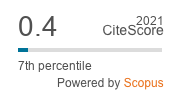Assessment of population and damage of pulse beetle, Callosobruchus chinensis L. on different pulse grains
DOI:
https://doi.org/10.33307/entomon.v41i3.183Keywords:
C. chinensis, green gram, black gram, bengalgram, redgram, cowpea, soybean, pillipesara and peaAbstract
Population development and grain damage by C. chinensis was assessed on eight different host-grains viz., greengram (Vigna radiata L.), blackgram (Vigna mungo L.), Bengalgram (Cicer arietinum L.), redgram (Cajanus cajan L.), cowpea (Vigna sinensis L.), soybean (Glycine max L.), pea (Pisum sativum L.) and pillipesara (Phaseolus trilobus L.) were estimated. Among all the host-grains, maximum oviposition was recorded in blackgram (7.75 eggs/ 5 g grain). Survival was highest in bengalgram (86.43) and mean developmental period was shortest in greengram (28.47 days) which were on par with that in pillipesara (28.77 days) whereas index of susceptibility was highest in greengram (6.09) and was followed by pillipesara (6.03). The damage in terms of percentage of grains damaged and weight loss of grains increased with increase in storage period. Among all the host-grains bengalgram recorded significantly maximum percentage of grain damage (90.65%) and weight loss of grains (58.55%).
Downloads
Published
How to Cite
Issue
Section
License
Copyright (c) 2016 ENTOMON

This work is licensed under a Creative Commons Attribution-ShareAlike 4.0 International License.


